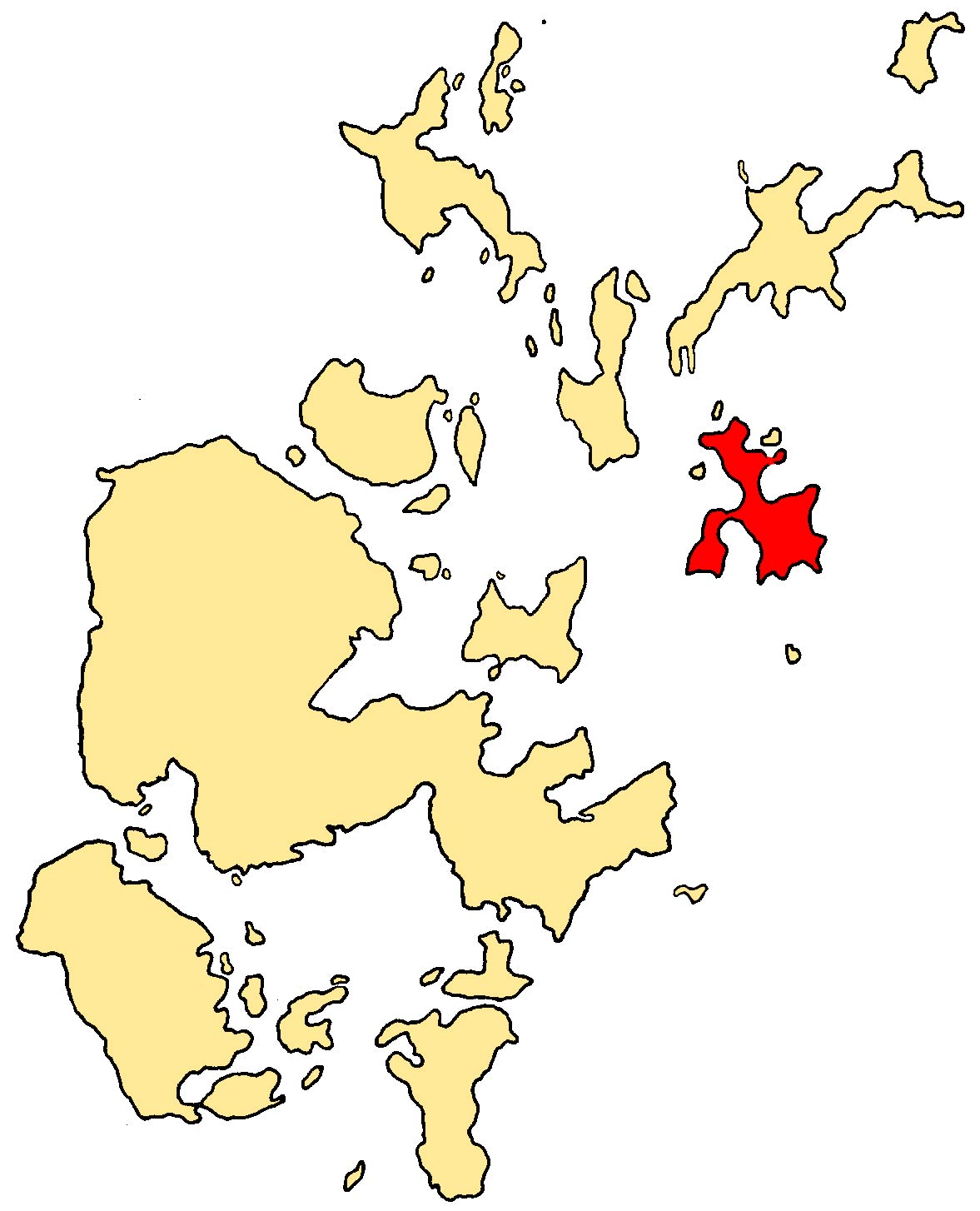- Stronsay
Infobox Scottish island

GridReference=HY669239
celtic name=
norse name=Strjónsey
meaning of name= Old Norse for 'good fishing island or 'good farming island'
area=3,275 ha
area rank=27
highest elevation= Burgh Hill 44 m
Population=343
population rank=25
main settlement=Whitehall
island group=Orkney
local authority=Orkney Islands
references= [2001 UK Census perList of islands of Scotland ] Haswell-Smith] [ [http://www.orkneyjar.com/placenames/pl-isle.htm Orkney Placenames] ] [ [http://www.ordnancesurvey.co.uk/ Ordnance Survey] ] [Anderson, Joseph (Ed.) (1893) "Orkneyinga Saga". Translated by Jón A. Hjaltalin & Gilbert Goudie. Edinburgh. James Thin and Mercat Press (1990 reprint). ISBN 0-901824-25-9] Pedersen, Roy (January 1992) "Orkneyjar ok Katanes" (map, Inverness, Nevis Print)]Stronsay is an
island inOrkney , off the north coast ofScotland . The main village is Whitehall, home to aheritage centre . It is 3,275 ha in size, and 44 metres (144 feet) at its highest point.Sights on the island include the
Vat of Kirbister natural arch andseabird s includingarctic tern s.Orkney Ferries sail from Whitehall toKirkwall on theOrkney Mainland , and planes fly there from the island'sairstrip .There is one school on the island which is for both Primary and Secondary pupils.
Stronsay is the birthplace of author
Douglas Sutherland .History
Prehistory
Two flint arrowheads discovered at a site investigated by
Orkney College in April 2007 are believed to date from the latePaleolithic or earlyMesolithic periods some 10-12,000 years ago. They were found amongst a scattered collection of other tools on a farm. If confirmed they could be the earliest human artefacts found so far in Scotland. [Ross, John (05 October 2007 ) "Orkney arrowheads find points to Scotland's earliest settlement". Edinburgh. "The Scotsman".]18th and 19th centuries
The island is now agricultural, but during the eighteenth and nineteenth centuries,
kelp collection andherring curing employed up to five thousand people. The population while still high for a Scottish island was over a thousand for the entire 19th century, and up until the mid 20th century. The 1891 census, for example, recorded a population of 1275 people, excluding seasonal itinerants involved in theherring industry.The kelp burning industry thrived in the 18th century, and some of the ruins of kilns can still be seen. It was started by James Fea of Whitehall in 1727, and lasted into the early 19th century.
The
Stronsay beast was a mysterious, decomposing corpse of a sea-creature that was stranded in1808 . The carcass measured 55 feet in length, with the "neck" 15 feet and the circumference of the body 10 feet.cite encyclopedia | title = Stronsay Beast | encyclopedia = Encyclopedia of Cryptozoology: A Global Guide | author = Newton, Michael | pages = 442-443 | publisher = McFarland & Company, Inc. | date = 2005 | id = ISBN 0-7864-2036-7 ] The corpse created a great stir, with some proclaiming it asea serpent , but others have claimed it was a decayedbasking shark .Geography and geology
Like nearly all of Orkney, Stronsay is made up of old
red sandstone which has produced a fine soil in many places. It is generally low lying.With an area of 33 square kilometers (13 square miles) it is the seventh largest of the Orkney Islands. Surrounding small islands include
Linga Holm ,Papa Stronsay , theHolm of Huip (named after a district in north west Stronsay) and the Holms of Spurness. To the north is Sanday, to the north westEday ,Shapinsay and Mainland Orkney to the south west, andAuskerry due south.Wildlife
While the landscape is treeless, the fertile soil supports a wide variety of wild flowers including
oysterplant ,frog orchid s,adder's tongue , and also a naturalised population ofPatagonian ragwort .There are a wide variety of birds on the island, and
twitcher s have recorded many rarities here. The common birds includewhooper swan , various ducks and geese, included theGreenland goose , as well asredshank ,snipe ,quail ,skua ,corn bunting andcorncrake s (rare in Scotland).The more unusual occasional visitors which have been recorded include:
*American golden plover
*Arctic red poll
*Pied wheatear
*Rustic bunting
*Scarlet rosefinch
*Tawny pipit
* Variouswarbler s including:Radde's warbler ,marsh warbler andsubalpine warbler ee also
*
Stronsay Beast
*Papa Stronsay
*Stronsay Airport
*List of Orkney islands References
Wikimedia Foundation. 2010.
